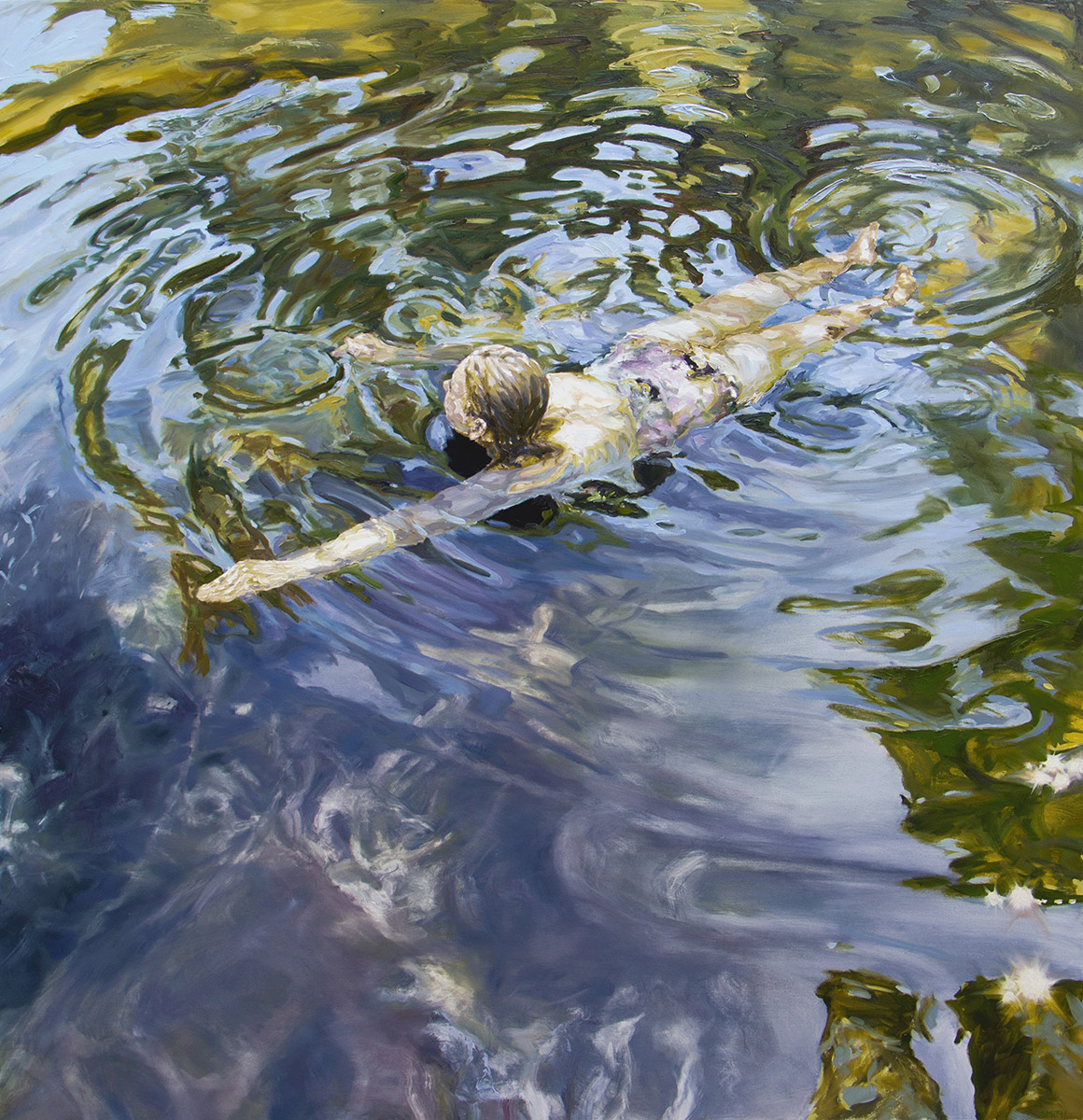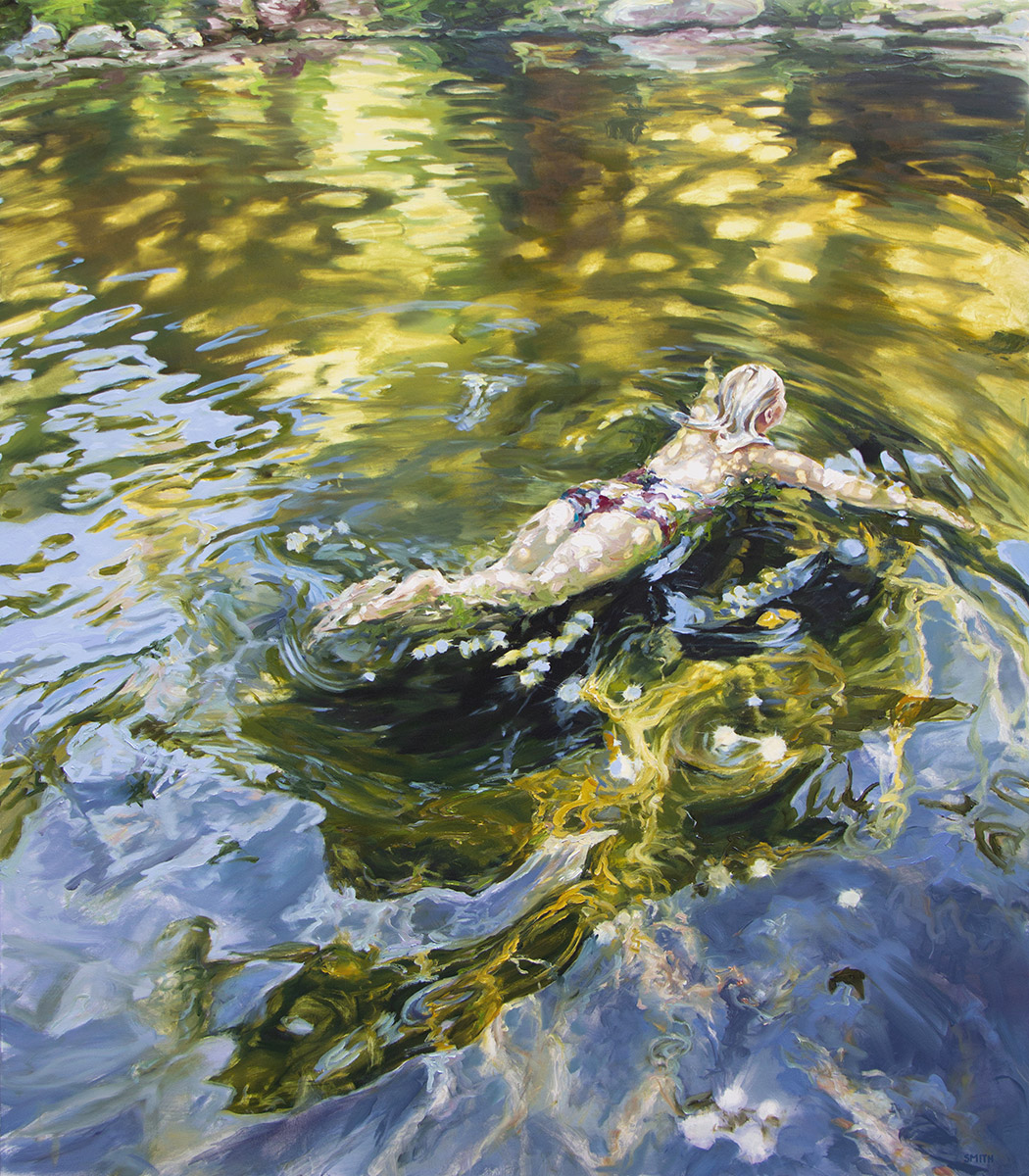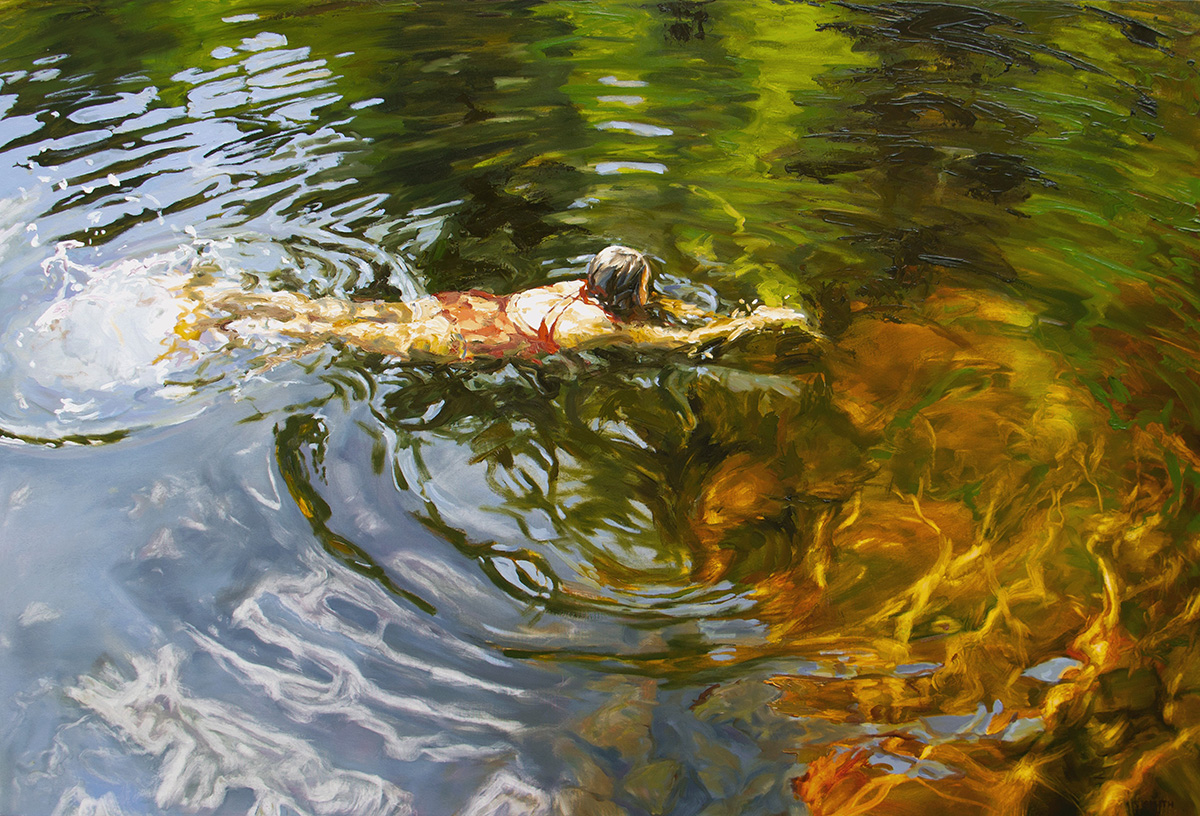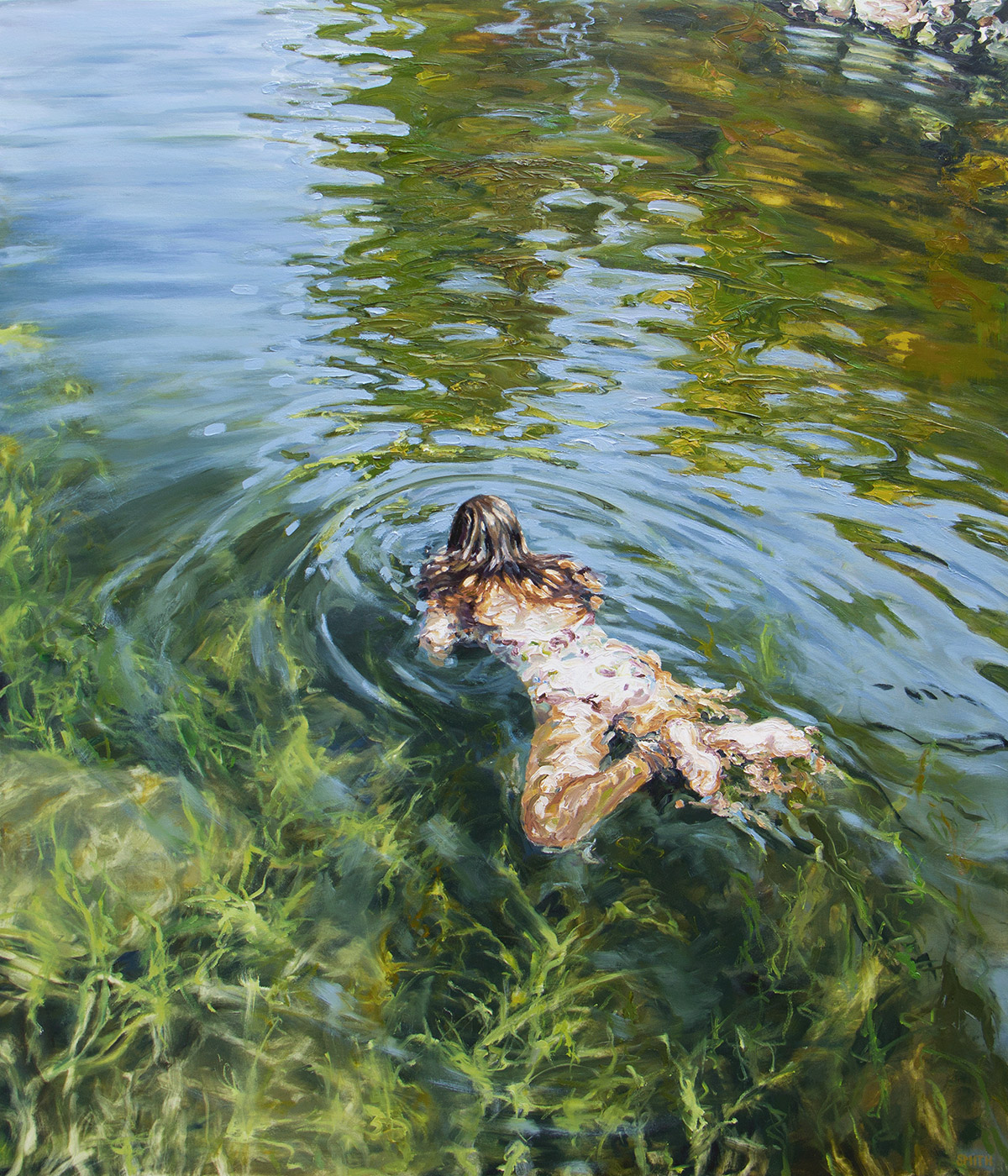All of the women in Vicki Smith’s paintings are suspended, floating in water and time. They court peace in pools and lakes, postponing gravity, going nowhere fast. Sometimes you can glimpse some rocks or stretch of shore at the edge of a frame, but mostly they are alone, buoyant and unbothered. These scenes are rendered almost romantically, with impasto snarls of blue and green and ochre, and when Smith talks about them, she uses words like “serene,” and “meditation,” and “memory.” She doesn’t even think of her women as “swimmers,” she says. “To me, it’s more intangible than that, a limitlessness that’s closer to flying.”
Smith says she wants her audience to feel weightless, to experience that same kind of lightness you get in your chest while floating and watching the sky drift by. Her tableaus feel dreamlike insofar as they appear fuzzy from up close but cohere as recognizable, even familiar, scenes with a couple feet of distance and a couple seconds to find the visual logic. In this way, her paintings mimic what it feels like to recall a moment. She’s interested in memory when it arrives involuntarily, like Proust and his tea-soaked madeleine. Her latest suite of paintings includes titles like Well-Being, Flow Forward, and Good Medicine, this last shared with her May exhibition at Bau-Xi in Toronto, her fifth solo show with the gallery in as many years.
Smith started painting as a student at the Ontario College of Art in the late 1970s and was one of the few women, she says, in a sea of guys. All the paintings they looked at in their weekly art history class were made by men and debated by other men, and she questioned the relationship all these men had to the women in the paintings whose names few ever knew. Those women, reduced to “muses,” were often painters in their own right; it bothered Smith that she saw women in art only through a certain set of eyes.
She recalls an encounter with John Everett Millais’s Ophelia: the fine details of the bright wildflowers floating in the riverbank; the attention to how the gown billows up, as though she were a mermaid; the hands upturned and the saint-like pose. “It was so beautiful—the transparency of the water, how it silhouettes her dress and frames her face,” says Smith. Millais and the Pre-Raphaelite Brotherhood believed studying and faithfully reproducing nature were of central concern to art, and Smith found their technical mastery inspiring. But there was something about Ophelia that felt disconcerting. “I was always kind of sad that Ophelia was dead, though,” she says. “It’s like listening to a song you think is happy and then realizing the lyrics aren’t so nice.”
After graduating, Smith found a nine-to-five as the head of design for a textile company and made art at night. This is what artists did, she thought: they took up jobs to support their material needs and made art to support their souls. She went on this way for twelve years. “But when my daughter was born, twenty-eight years ago, I quit and told my husband that I really needed to paint. I couldn’t wait any longer,” Smith says.


The scenes she renders today are meant to be bucolic, reminders of childhood moments that were easier and more carefree, flooded with endorphins. They appear, in a way, to be anti-Ophelias: summery and nostalgic, each one born from photographs Smith has taken of friends and family lounging in bodies of water: St. John’s, Banff, Vancouver, Florida, Hawaii, Mexico. She uses either her iPhone or an underwater camera, and her reference photographs are strewn about her third-floor studio in Toronto’s Parkdale. She paints from morning into the early afternoon in total silence, an effort to achieve the same meditative state of her subjects. Then she scrapes it all off and starts again. Her first four hours, she explains, are garbage.
When she began painting her swimmers about fifteen years ago, they were abstracted by mottled brush strokes, dissolving into lakes like sugar cubes dropped in iced tea. The paintings show them from beneath the water’s edge, focused on how the light plays on the surface and makes their heads effervescent, distorted.
The irony is that the painter of these swimmers cannot swim. She can’t stand the thought of her head being submerged. “There’s a sense of peace in all my paintings,” she says, “a beauty in being held by the water, but I would have a hard time if you dumped me in a lake.”






